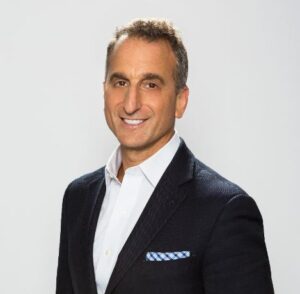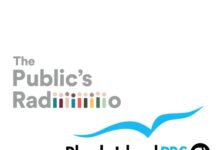
On Monday, Audacy released its State of Audio report, detailing the company’s latest findings in audio advertising. Radio Ink sat down with Audacy Chief Marketing Officer Paul Suchman to discuss the results and how radio, talent, and clients can benefit.
Radio Ink: In State of Audio, you say radio is a reach machine. Of course, we already know in addition that radio is also an ROI machine. We’ve seen it with Procter and Gamble and with the pharmaceutical companies now, but recession is still a four-letter word. How do radio and audio sell themselves against 2023’s economic headwinds?
Paul Suchman: We’ve done a lot of research, even leading up to State of Audio. The evidence is really conclusive about the engagement, the trust, the immersion, and the inextricable linkage to our daily rituals of audio. People consume audio all day long, and they lean into it really hard, and they trust it. It’s a great medium for advertisers. Even Nielsen reports that people spend 30% of their day consuming audio media versus other media. And we know it’s underspent. We know that advertisers are still spending 9%, 10% against the media that’s consumed 30%. So the numbers are not there.
It really becomes about the industry strongly making this case for “why audio?” – why audio is such a hard performer and a hard worker at every level of the funnel. Radio and audio always get the credit for being reach media.
We know it reaches more percentage of the population than any other medium, more consistently, in more hours throughout the day. So you can tick that top of the box in terms of reach and frequency. But when you add that element of precision, your ability to target and deliver messages at the mid-level of the funnel from message to decision, and at the bottom level of the funnel, is really going to drive transactions and be demonstratively linked to ROI. That makes that case on why audio is what the industry needs to do in 2023.
Radio Ink: That takes success stories. Audacy included several in State of Audio. You had a very successful integrated audio campaign with Hyundai. Tell us about that campaign.
Paul Suchman: Hyundai is a wonderful client partner, and they teamed up with us to really look at that mid-level funnel, where you’re passing that awareness and understanding, and you’re more into that deep engagement phase. So our Audacy team put together an integrated, multi-platform audio plan that had a couple of elements to it.
The first was it was an always-on campaign. It ran consistently throughout calendar year 2022, really making sure that we had reached frequency and were staying top of mind with potential buyers, right? Old-school metrics there. But the messaging itself was really focused on deep engagement and driving foot traffic and driving web traffic.
We then took a total audio approach. Radio and podcast streaming on our app. We supplemented it with digital making sure that we were really targeting those core cohorts that the Hyundai brand was going after. To that end, we were looking at lifestyle-type groups, because we know that when you are targeting lifestyle, you can tap into that trust by targeting content and messaging, using voices that lead into that lifestyle. You can tap into that engagement. You can tap into that immersion and continue to drive strong favorability scores for the brand.
The results were just amazing. It was a 7.4% point lift for purchase intent from the audio campaign. Then a 10.4 jump in favorability among female listeners. That was a big cohort. Hyundai is really recognizing female decision-makers. Female buying power across all demographics is getting increasingly stronger. We targeted a lot of our lifestyle content there, and it worked.
Radio Ink: Talking about demographics, I know one that radio is really striving to reach right now, Gen Z. Of course, everyone’s, you know, trying for a piece of that But I thought there was something interesting in the state of audio is that Instagram came to you to help advertise. And I think a lot of people think of, people are leaving audio to go advertise on socials. But when Instagram comes to you, especially to get that younger audience, I mean, how do you blend social media and audio to make that come together?
Paul Suchman: Right. So, Gen Z is a big topic. That younger listener is not just coming to audio, they are in audio. And they’re in audio well beyond AI-generated playlists behind subscription walls. They are absolutely embracing live local content. And there are a couple of reasons that are driving that.
One is audio distribution strategy in an increasingly digital medium. Audio can meet Gen Z consumers wherever they are: on their phones, laptops, cars, smart speakers, watches, and smart devices. Wherever they are, that content is readily available. They can be doing the multitude, multitasking things that they always do and be actively consuming audio.
And then the second is the talent that is on audio. We have seen this incredible wave of talent coming to audio. People who are in the movie business coming in, in the television business, authors, musicians. People are coming to audio because they can have long-form, real, deep, personal conversations with their listeners. So when you have a distribution strategy that allows a Gen Z consumer to get that audio content wherever they are, however they are, whenever, then you have the people they loves, trust, and listen, it’s an absolute winning combination there.
The tailwind of digital has been really, really strong. Instagram recognizes that, right? Meta, if you go to the mothership, they are looking to command more of a consumer’s media time on their platforms. Instagram, which skews younger than traditional Facebook, has a stronger Millennial and Gen Z population consuming their media. They’ve got the tailwind of being a relatively safe media when compared to TikTok. They recognize that they need to continue to pull in viewers into their platform. And they recognize Gen Z being all over audio. The feedback we get from Meta is that audio is helping by integrating long-form audio and trusted hosts into their media plan.
They wanted to use audio as a way to attract more eyes onto their content. Specifically, the objectives of that campaign were awareness, affinity, and recommendations in a very distinct segment of socially conscious adults and teens. They wanted to be a safe place for those socially conscious young adults and teens. They wanted to be a smart place for those people. They turned to personalities to step up and help them.
Radio Ink: Another success story from State of Audio is New Balance. Sneaker culture is still huge, but some advertisers might want to shy away from audio for what’s a visual product. You tied it into your sports personalities with success. Right now, sports is a top-of-mind issue. With many cutting their sports radio products being cut, what does the future of sports audio look like and how can advertisers leverage that?
Paul Suchman: We love sports audio and its fans. Listening to audio, particularly when you’re a fan, is just an amazing experience. One of the great fundamentals of audio is community. Sports stations are distillings of community, right? On WFAN, our sports station in New York, 50% of our listeners on the stream come from out of state. It’s displaced New Yorkers consuming that content. They want that content and conversations in their home city from voices they know, from voices that they trust.
New Balance tapped into that; they understand that the sports audio fan is about the most ravenous audio fan there is. 342%: that’s the headline. 342% return on ad spend for New Balance as measured. Again, this comes back to the whole State of Audio: reach, frequency, plus precision. When New Balance and their agency wanted to boost awareness and track sales on their basketball sneakers, our sports podcasts reached those younger basketball fans who wanted that performance and they wanted to be very trendy as well.
And you made a good point about sneakers it being a visual product. But again, when you come back to these podcast hosts and how deeply trusting their fans are when they talk about it, it’s like hearing a recommendation from a friend. And you can get over the visual hump seamlessly.
Radio Ink: I know it’s another hot topic – AM. Where does AM fit into the state of audio?
Paul Suchman: We have great news stations that still broadcast on the AM dial. We are deep believers that the frequency should continue in cars. In terms of State of Audio being about the full funnel, that’s AM, FM, stream, and podcasting. AM is part of that. AM helps drive that reach. AM helps drive that traditional side of radio, while and newer and younger fans consume that local content on the stream. AM continues to be an important part of the OTA value proposition. So I know a state of audio is, it’s an ongoing process.
Radio Ink: Let’s switch this up. What’s your biggest pet peeve in a radio ad? And then again for a podcast ad?
Paul Suchman: I think my biggest pet peeve is when brands don’t take the time to fully embrace the medium and don’t really lean into audio. I’m a creative, so this is probably my favorite topic. When you hear radio advertising that’s not thoughtful and is almost a parody of radio itself, those are not going to land. But when you have brands who are really thinking about audio, and they’re creative teams who are really thinking about all the tools at their disposal: voice, sound design, sound effects, music, the absence of sound, those allow theater of the mind to take place.
You can’t just take a TV script and cut it down into a radio spot. Great audio advertising leverages all the wonderful qualities of audio to tell stories. And if you do that thinking about your target and where your target is going to consume it and what kind of content that that ad is going to show up in, I think that it creates great opportunities to make really, really powerful, powerful work.
When it comes to podcasts, it’s really the same thing. There are a few types of ads that happen in podcasts. You can have those traditional 30-second ads, live reads from the host, or you can have that content even more integrated into the conversation itself. I think that when it comes to live reads and integration into that content, there is a real onus on the advertiser to make sure that that podcast host is right for their brand. That the host truly believes in their product or service and is going to talk from a position of authenticity. There’s a little more art and science in that than you may think.
Then it’s giving that host the freedom to talk about the product from their perspective. Understanding as a marketer, you’ve got to let go, right? You’ve got to let go of your brand architecture and your brand attribute and let that podcast host know what that podcast host does. So that’s not so much a pet peeve as it is not matching brand and host in the right way and not empowering that host, that voice, to tell the story in their way.
Radio Ink: Measuring data is always an ongoing process, but in making this year’s State of Audio was there anything that really surprised you or jumped out at you?
Paul Suchman: State of Audio is our opportunity to give a perspective on the audio industry. As you said at the beginning, audio is an underspent medium. I think all of us in the industry have to be champions of our own brands, as well as champions of the audio industry. State of Audio is how Audacy contributes to the audio industry.
This is our fourth, and I will tell you I’m super excited about this one in particular. I don’t know if anything jumped out at me, but this one I’m excited about because it is such a pragmatic guide to why advertisers should be spending on audio. They should be rethinking how audio is not just a top-of-the-funnel medium for reach, but a hard-working tool and a strategic weapon in any marketer’s war chest that needs to be leveraged at all levels of the funnel. It didn’t necessarily surprise me, it delighted me that the research we did, the clients we were able to pull, and the story that we were able to tell proved that. We’re arming our sellers with this. We’re having many, many meetings with our clients, both brands and agencies, and they’re excited to see this.





